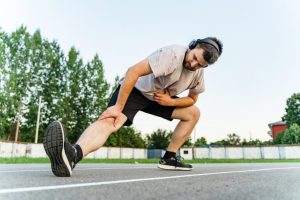During and after exercise, whether leisurely or intense, the muscle undergoes a disruption that consists of muscular tears and cell activation. Through the maturation and growth processes, such muscle damage begins to repair, ultimately developing into larger, stronger, and more resilient muscles.

However, this maturation and growth process is only optimized when proper recovery techniques are implemented before, during, and after a given exercise period.
In what follows, we’ll be discussing the best ways to improve and optimize recovery times from exercise. Though similar in its tactics, we’ll also share a few effective strategies for managing delayed onset muscle soreness.
How to Improve Muscle Recovery Time
With several tools, tips, and tactics available to deal with muscle soreness and improve recovery time, it’s important to choose and prioritize efficient methods. This is much better than randomly choosing any method and expecting the same outcome of optimized recovery time.
While some of the following tips might seem simple, it’s clear that the implementation of these tips will help the process of recovery.

Adequate Hydration
Hydration doesn’t just comprise water consumption but also sodium and electrolytes. Contrary to popular belief, water alone won’t optimize hydration. Instead, the body requires a certain level of sodium to retain the water being consumed throughout each day.
Ensuring adequate hydration will result in the promotion of peak performance, joint lubrication, injury prevention, and, ultimately, recovery time optimization.
Carbohydrate Consumption
Primarily consumed as a means of energy prior to a given workout, carbohydrates also work to restore glycogen levels following a workout so as to recharge energy stores.
Thus, in order to optimize for performance and recovery, carbohydrate consumption pre-workout and post-workout should be included. Pre-workout consumption helps performance, and post-workout consumption helps recovery.
Protein Consumption
Often referred to as the building blocks of life, protein has several important roles, both for physical and athletic performance as well as overall health and well-being. Regarding exercise, protein aids primarily in muscular recovery and repair.
Protein consumption promotes muscular recovery and acts as a defense against muscle soreness from exercise while providing the necessary energy and physiological requirements for peak performance.
While everyone’s nutritional demands are different, based on age, activity level, height, weight, and sex, the most active individuals should consume upwards of 1-1.5 grams of protein per pound of body weight.
Managing Delayed Onset Muscle Soreness
The amount of soreness experienced after exercise depends on several factors, such as exercise intensity, duration, recovery or lack thereof, and experience level of the individual. There is, however, an amount of soreness to be expected from physical activity.
Although soreness can be a sign of overtraining, it may also be a sign of muscular growth, repair, and progress. As such, it’s important to learn how to listen to your body, understanding when it’s time to rest and when it’s time to continue.
Movement is also a great recovery management technique because it promotes blood flow, circulation, mobility, and thus recovery. Below are three tips for managing delayed onset muscle soreness and fatigue from exercise.
Follow a Stretching Regimen
Mobility and flexibility are critical for overall health, wellness, and performance. To ensure that the muscles and joints move fluidly, without pain, and without limitation from muscular soreness, it’s important to stretch consistently.

Though it doesn’t need to be complex, stretching is an imperative part of living an active lifestyle. To reduce or prevent muscle soreness from exercise, it’s important to warm up dynamically pre-workout, stretch intermittently during the workout, and statically cool down post-workout.
Use Contrast Therapy
Otherwise referred to as hot & cold therapy, contrast therapy is an effective recovery tool, particularly for its ability to reduce, manage, and prevent delayed onset muscle soreness.
Contrast therapy, which is often the method of taking a sauna followed by a cold plunge, has shown to provide several health benefits. In addition, contrast therapy is very effective in promoting muscle recovery, reducing soreness, and improving future performance.
Rest and Recover
While it’s important to learn to listen to your body and follow the advice of your own coach or trainer, rest and recovery are essential components of any active lifestyle.
The most effective method follows a multifaceted approach comprised of scheduled rest days and active recovery days. These active recovery days include low-intensity, leisurely physical activity such that the period doesn’t comprise complete inactivity.
Finally, sleep is not to be ignored, and it can be argued that it is the most effective tool for recovery and soreness prevention.
There are also some alternative strategies for recovery and soreness management, including massage therapy and other techniques such as acupuncture, and these can be investigated and considered by each individual.
Final Thoughts
Regular exercise that includes proper recovery techniques is the most efficient. A recovery regimen is the best way to prevent future injury, improve performance, speed up recovery times, and manage muscle soreness from exercise.
